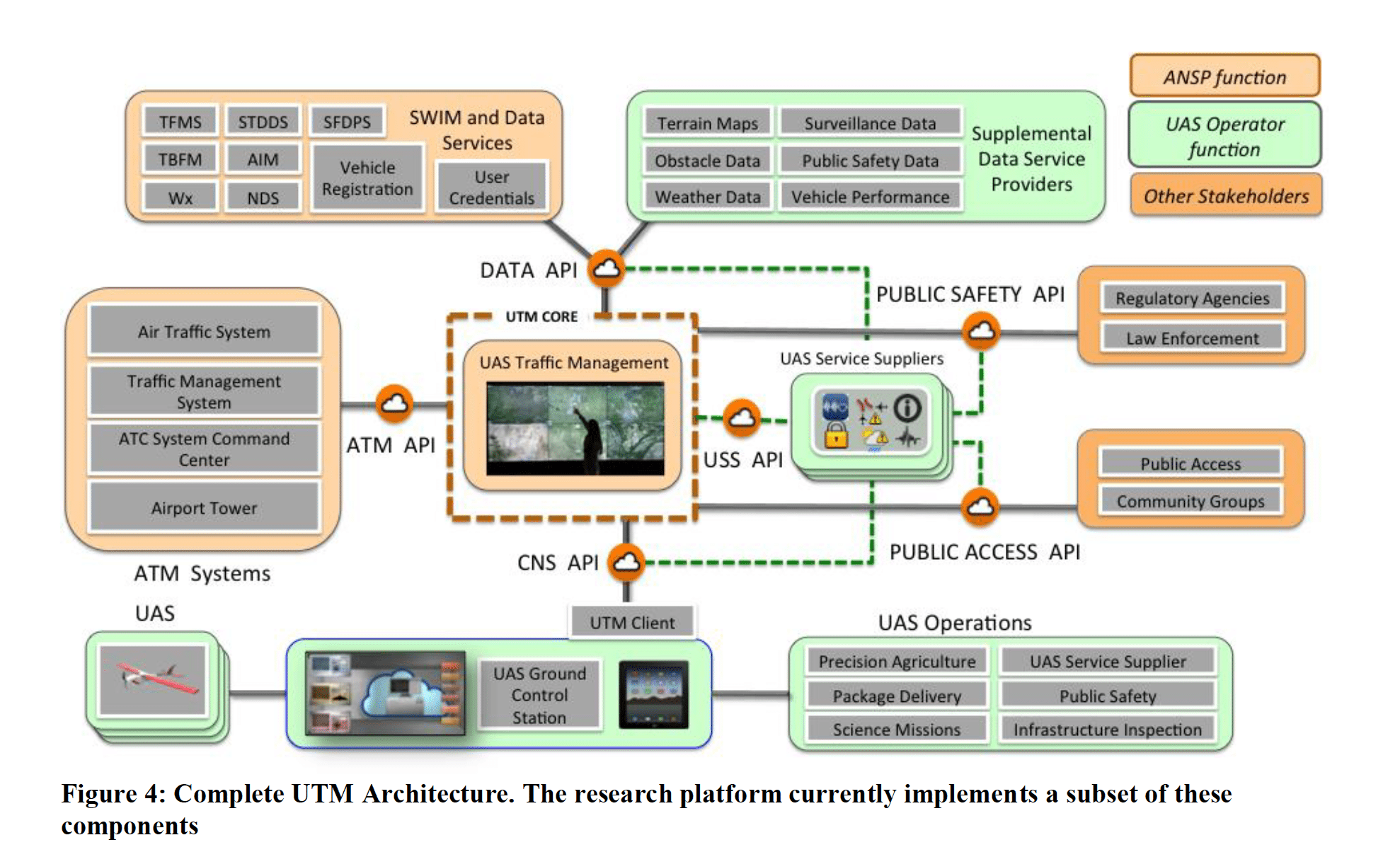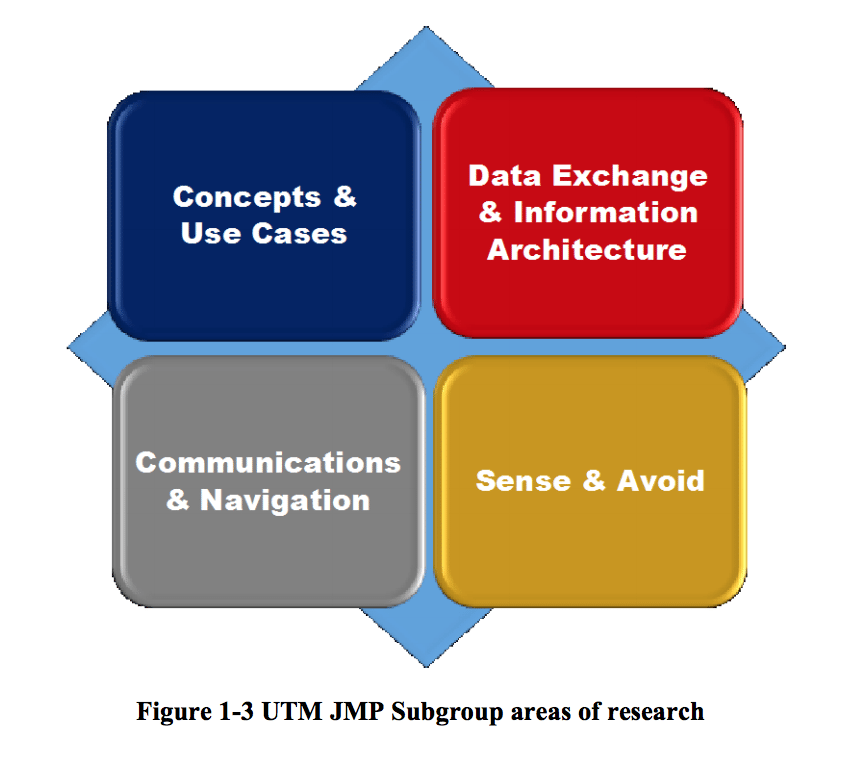It takes a whole country — government, industry, academics — to work out sticky issues with drone flight traffic control. Drone test trials continue.
Drones are becoming essential in many industries.
The real estate agents and journalists love the drone, especially when selling a ranch that needs a good video with sweeping music or illustrating a story with a dramatic aerial shot. More interesting and technically challenging are the industrial uses of the drone or unmanned aircraft system (UAS): industrial inspection, surveying, construction, agricultural field inspections, wireless coverage extensions at events, and payload (package) delivery. Search and rescue, surveillance, and police work are other obvious civilian uses of the drone.
Commercial drone use is increasing fast. The U.S. market is by far the largest drone market, reports SkyLogic Research. Approximately 4.1 million drones in the market, about 61,500 commercial small unmanned aircraft system (sUAS) registrations, and 50,385 certified remote pilots by mid 2017. While many drone owners are still hobbyists, businesses see the potential of commercial drones are working through industry groups, government and help develop ways to manage the UAS traffic.
Tests are going on now to determine what the traffic control system will look like. Here are some test centers and drone trials in the U.S.
U.S. Federal Aviation Administration regulations
The FAA removed one of the bottlenecks to drone use in industry by releasing regulations in that allows drone operators to fly drones under 400 feet above ground level (AGL) without having to be a licensed pilot. Under the Part 107 commercial drone regulations, drone operators take a written test to be certified to fly the UAS.
Part 107 certification eased the burden on industry, but limits still exist, for good reason. With Part 107, the drone must be in the line of site of the operator, be flown during the day and not over people. Operators can apply for waivers to those rules.
The challenge now is to fly drones beyond visual line-of-sight (BVLOS) in the low-altitude airspace where FAA air traffic services are not provided. Object avoidance and traffic management systems are needed.
The FAA is in the process of working out the rules. The agency involves academia, industry and other government agencies on R&D and testing to develop and codify what the object avoidance and traffic management systems will look like. FAA and NASA regulate testing of drones through Centers of Excellence (COE). These centers include 23 universities, led by Mississippi State University, focus on testing, research and training to integrate of UAS into the nation’s airspace.
The FAA uses the Alliance for System Safety of UAS through Research Excellence (ASSURE) to manage some of the COE studies. Twenty-three universities are part of the coalition. “ASSURE members are core to three FAA UAS test sites, lead four FAA research centers, have seven airfields and a 340 UAS fleet — 24 more UAS than the USAF,” says the ASSURE website.
Participants include: Mississippi State University, Drexel University, Embry-Riddle Aeronautical University, Kansas State University, Montana State University, New Mexico State University, North Carolina State University, Oregon State University, University of Alabama-Huntsville, University of Alaska-Fairbanks, University of California Davis, University of Kansas, University of North Dakota, The Ohio State University, Wichita State University, Auburn University – Affiliate Member, Concordia – Affiliate Member, Indiana State University – Affiliate Member, Louisiana Tech University – Affiliate Member, Sinclair Community College – Affiliate Member, Technion – Israel Institute of Technology – Affiliate Member, Tuskegee University – Affiliate Member, and University of Southampton – Affiliate Member.
FAA, NASA: Traffic control systems
The FAA, NASA, other agencies and industry are working on a traffic management system, called unmanned aircraft system traffic management (UTM) for drones. The system would provide some traffic control for all the drones in our sky. NASA and FAA formed a research transition team where they both work on — and agree on — the UTM rules. Right now they are studying the roles and other aspects in a UTM system.
According to the NASA’s solicitation request document, NASA is developing “a UTM research platform where UAS operator, UAS support service provider, and air navigation service provider roles; data and information exchanges; and scalable architectures can be examined. The UTM research platform includes functions for authentication, track and locate, weather integration, 3D maps, demand capacity balance, and large-scale contingency management.”

NASA is asking for help from industry and academia to help test specifications for the air traffic control for drones — UTM (unmanned vehicle traffic management) system. Above, an example from NASA. (Source: NASA)

NASA’s unmanned vehicle traffic management (UTM) areas of study. (Courtesy of NASA)
Many stakeholders will help NASA refine and validate the UTM concept: DOD, DHS, DOI, FAA test sites, the FAA’s UAS Center of Excellence, industry and academia. The testing is happening at six sites, and NASA is asking for help in reviewing and testing the UTM. NASA updated its solicitation request on March 2018 and encourages new participants.
Qualcomm
In 2016, Qualcomm and AT&T announced they would be testing drones on 4G networks with drones that use Qualcomm’s Snapdragon Flight control software.
“For drones to fulfill their potential, they must safely operate in densely populated cities as well as remote rural areas — knowing where and when they are not allowed to fly, such as in controlled airspace, near wildfires, over emergency sites, or through temporarily flight-restricted areas (e.g., stadiums during special events),” wrote Qualcomm’s Director, Technical Marketing Maged Zaki, in 2016 blog post.
In 2017, after approximately 1000 flights, Qualcomm concluded that drone flight is viable on a 4G LTE commercial mobile networks, BVLOS at 400 feet AGL and below.
They tested coverage, signal strength, throughput, latency, and mobility across network cells and how they function in flight. Qualcomm ran the test flights on commercial 4G LTE networks at the Qualcomm UAS Flight Center in San Diego.
“Many of the anticipated benefits of drones, including delivery, inspections and search and rescue will require a highly secure and reliable connection,” said Chris Penrose, senior vice president, IoT Solutions, AT&T in a statement. “With a focus on both regulatory and commercial needs, LTE connectivity has the potential to deliver optimal flight plans, transmit flight clearances, track drone location and adjust flight routes in near real-time. Solving for the connectivity challenges of complex flight operations is an essential first step to enabling how drones will work in the future.”
Other AT&T tests
AT&T tested extending wireless coverage at events, using the Flying COWs (Cell on Wings). “Possible uses include Flying COWs (Cell on Wings) providing LTE coverage at large events or even rapid disaster response. A Flying COW may even be able to provide coverage when a vehicle is unable to drive to a designated area,” wrote CEO – AT&T Communications John Donovan in a blog.
Intela
Intel’s CEO Brian Krzanich chairs the FAA’s Drone Advisory Committee, which helps to “create broad support for an overall integration strategy and vision” in the quest for new FAA rules on drone traffic control. The committee participants are all C-level who have a stake in the drone business. (Qualcomm is also on the committee.) Intel is known for its acrobatic drone light shows over music festivals and sporting events with teams of small drones, run on one computer by one person.
Intel’s Flight Control product is autonomous flying but it is unclear if it influencing the FAA/NASA testing and planning for UTM.
The post Drone test trials to shape FAA rules appeared first on RCR Wireless News.
